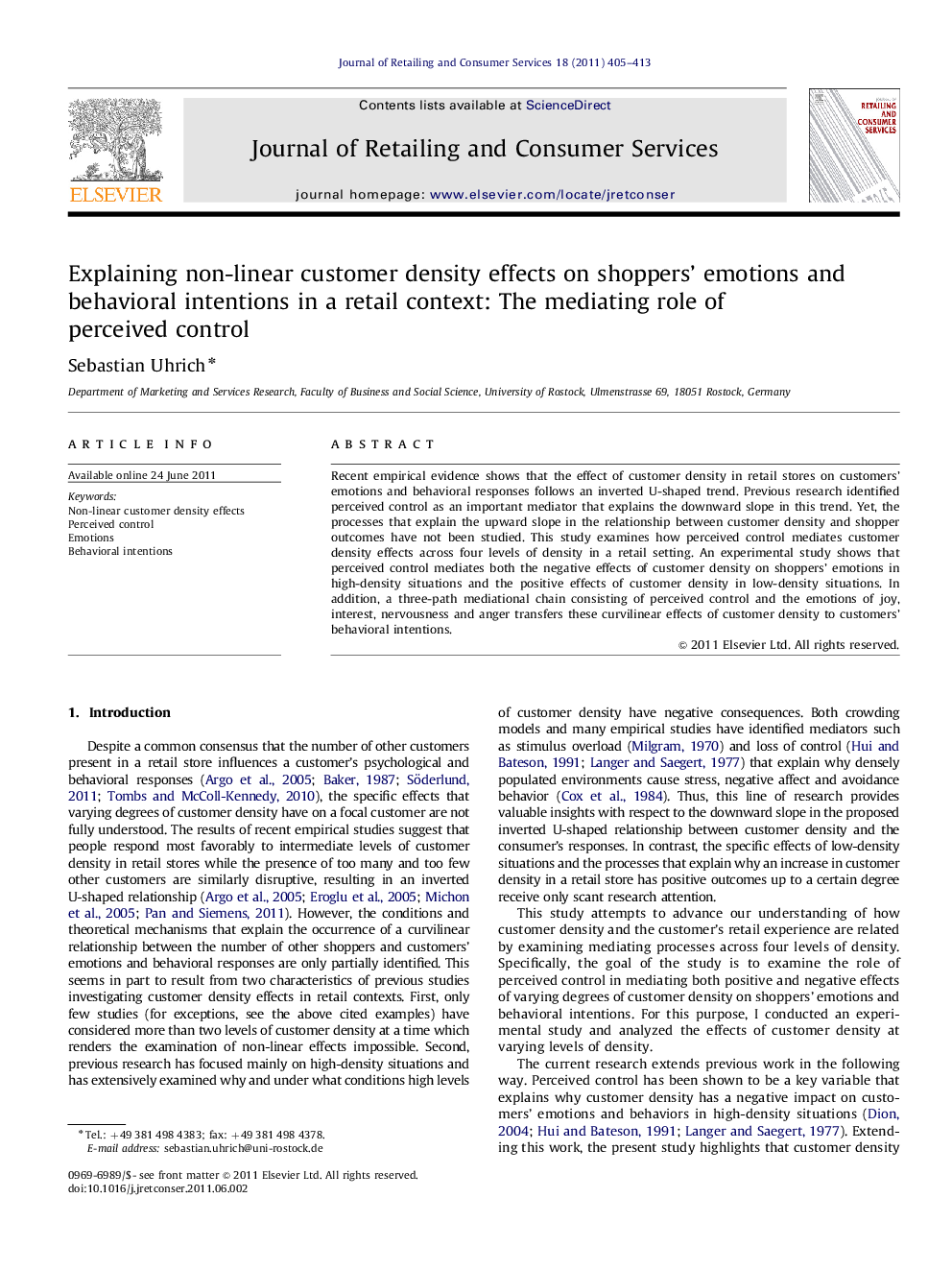| Article ID | Journal | Published Year | Pages | File Type |
|---|---|---|---|---|
| 1029376 | Journal of Retailing and Consumer Services | 2011 | 9 Pages |
Recent empirical evidence shows that the effect of customer density in retail stores on customers’ emotions and behavioral responses follows an inverted U-shaped trend. Previous research identified perceived control as an important mediator that explains the downward slope in this trend. Yet, the processes that explain the upward slope in the relationship between customer density and shopper outcomes have not been studied. This study examines how perceived control mediates customer density effects across four levels of density in a retail setting. An experimental study shows that perceived control mediates both the negative effects of customer density on shoppers’ emotions in high-density situations and the positive effects of customer density in low-density situations. In addition, a three-path mediational chain consisting of perceived control and the emotions of joy, interest, nervousness and anger transfers these curvilinear effects of customer density to customers’ behavioral intentions.
► This research examines non-linear customer density effects in retail settings. ► Perceived control mediates non-linear customer density effects. ► Perceived control and emotions mediate these effects to behavioral intentions. ► Other shoppers' presence increases perceived control in low-density situations.
